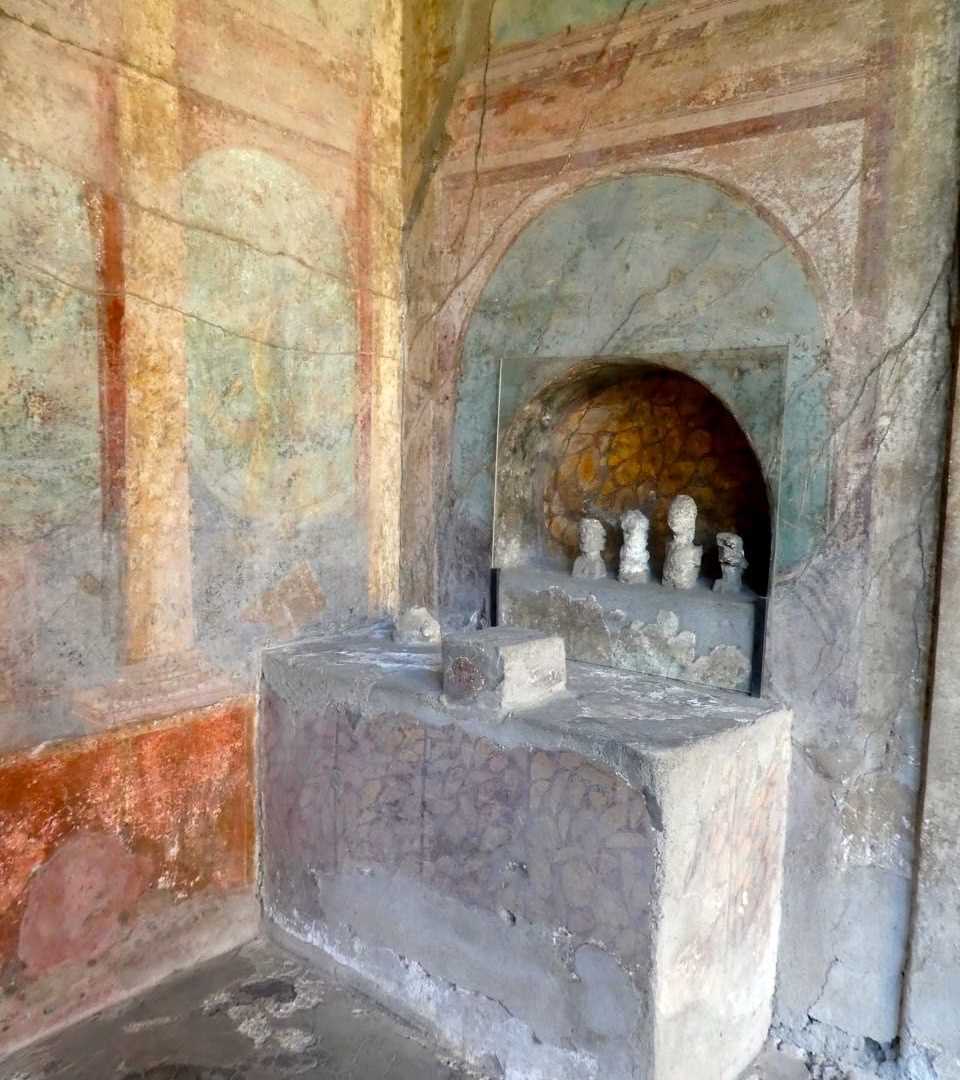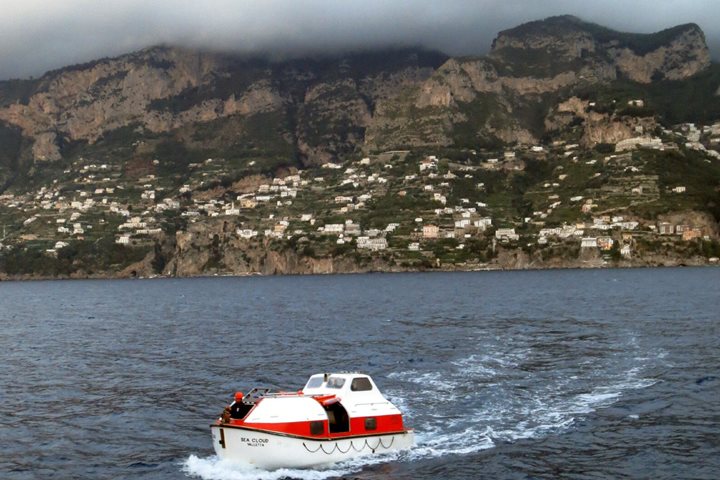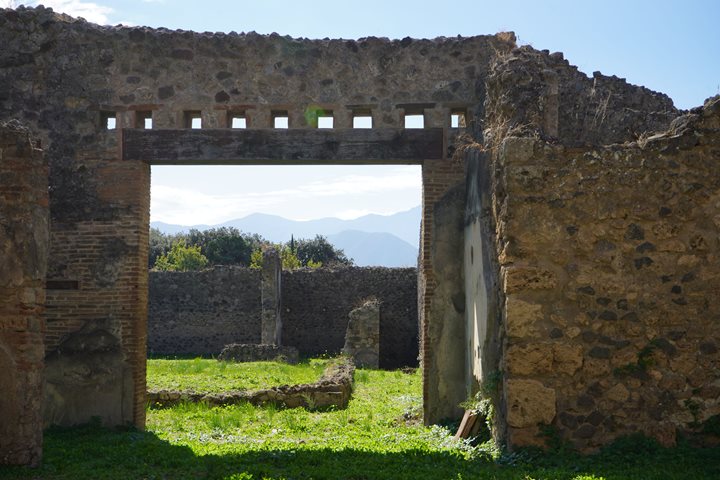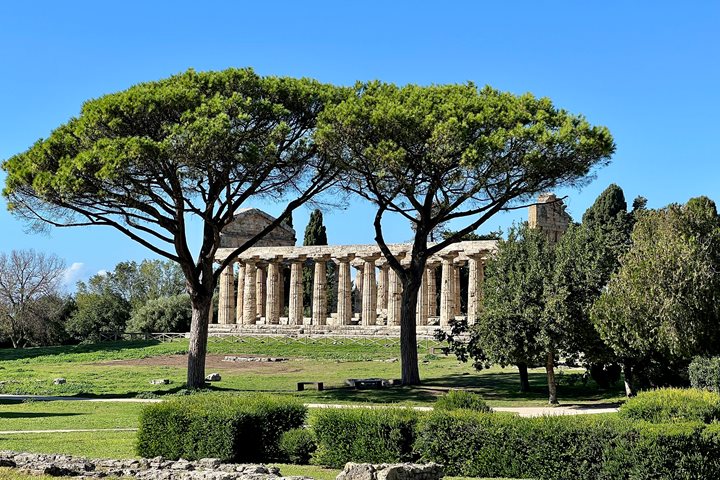Travelers and poets of the past have waxed eloquently about the spectacularly capricious nature of the geology around the Bay of Naples—the Campi Flegrei (Burning Fields). This morning, we set off early to bear witness to the destructive power of Mother Nature with a visit to the site of Pompeii.
For those living in the shadow of Mt. Vesuvius in August of 79 A.D., the end came swiftly and cruelly in a volcanic eruption that last 19 hours and buried the city under six meters of ash and pumice. While most of the city’s estimated population of 14,000 people tried to flee, others sheltered in place, only to be crushed as the buildings collapsed under the weight of volcanic debris or suffocated by toxic sulfur fumes and ash.
Sadly, we were not alone on our visit to the doomed city. To avoid the crowds, we entered by the Theater Quadriporticus. After a stop at the Odeon, we made our way a few blocks up the Via Stabia to visit the House of the Menander, a luxurious peristyle house renowned for its floor mosaics and wall decorations. On our way to the Herculaneum Gate and to the House of Mysteries, we visited the Stabian Baths and passed by several bakeries, empty shops, and small food stalls. After three houses, it seemed we had barely scratched the surface of this fantastic site, but our visit did allow us a glimpse into the lives of both the ordinary and the rich and famous Romans of the 1st century A.D. In the afternoon, we enjoyed a photo safari around Sea Cloud as we sailed past the island of Capri.







